There have been many astronauts who have made tremendous contributions to our knowledge of space. But asking “who is the most famous?” is somewhat tricky. For one, its a bit subjective. And second, it can be hard to objectively measure just how important and individuals contributions really are. Surely, all astronauts are deserving of recognition and respect for their bravery and contributions to the pursuit of knowledge.
Nevertheless, in the course of human space exploration, some names do stand out more than others. And some have made such immense contributions that their names will live on long after we too have passed away. So without further ado, here are just a few of the most famous astronauts, along with a list of their accomplishments.
Yuri Gagarin:
As the first man to ever go into space, no list of famous astronauts would be complete without Yuri Gagarin. Born in the village of Klushino in the Smolensk Oblast on March 9th, 1934, Gagarin was drafted into the Soviet Air Force in 1955 and trained in the use of jet fighters. In 1960, he was selected alongside 19 other pilots to join the newly-formed Soviet Space Program.
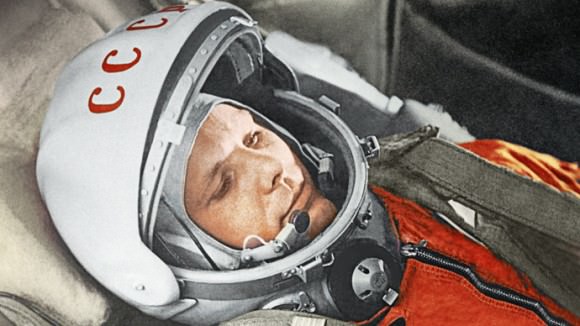
Gagarin was further selected to become part of the Sochi Six, an elite group of cosmonauts who formed the backbone of the Vostok program. Due to his training, physical size (as the spacecraft were quite cramped), and favor amongst his peers, Gagarin was selected to be the first human cosmonaut (they had already sent dogs) to make the journey.
On April 12th, 1961, Gagarin was launched aboard the Vostok 1 spacecraft from the Baikonur Cosmodrome, and thus became the fist man to go into space. During reentry, Gagarin claimed to have whistled “The Motherland Hears, The Motherland Knows”, and reportedly said, “I don’t see any God up here” when he reached suborbital altitude (which was falsely attributed).
Afterwards, he toured the world and became a celebrity at home, commemorated with stamps, statues, and the renaming of his ancestral village to Gagarin. The 12th of April is also known as “Cosmonauts Day” in Russia and many former Soviet-states in his honor.
Gagarin died during a routine training exercise in March 27th, 1968. The details of his death were not released until June of 2013, when a declassified report indicated that Gagarin’s death was caused by the error of another pilot.
Alan B. Shepard Jr.:
In addition to being an astronaut and one of the Mercury Seven – the first seven pilots selected by NASA to go into space – Shepard was also the first American man to go into space. He was born November 18th, 1923 in Pebble, California and graduated from the United States Naval Academy with a Bachelor of Science degree. While in the Navy, Shepard became a fighter pilot and served aboard several aircraft carriers in the Mediterranean.
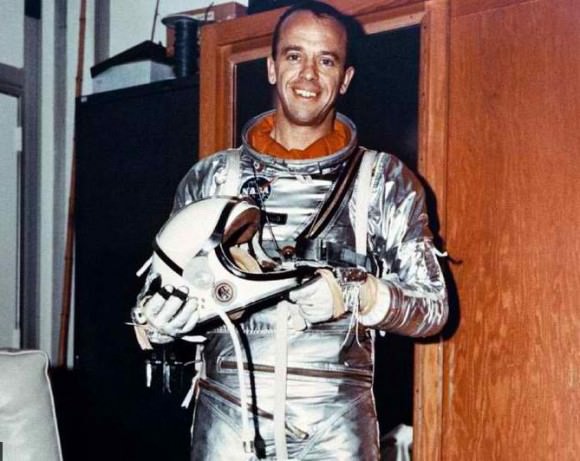
In 1959, he was selected as one of 110 military test pilots to join NASA. As 0ne of the seven Mercury astronauts, Shepard was selected to be the first to go up on May 5th, 1961. Known as the Freedom 7 mission, this flight placed him into a suborbital flight around Earth. Unfortunately, Alan was beaten into space by Soviet cosmonaut Yuri Gagarin by only a few weeks, and hence became the first American to go into space.
Shepard went on to lead other missions, including the Apollo 14 mission – which was the third mission to land on the Moon. While on the lunar surface, he was photographed playing a round of golf and hit two balls across the surface. After leaving NASA, he became a successful businessman. He died of leukemia on July 21st, 1998, five weeks before the death of his wife of 53 years.
Valentina Tereshkova:
Another famous Russian cosmonaut, Tereshkova is also internationally renowned for being the first woman to go into space. Born in the village of Maslennikovo in central Russia on March 6th, 1937, Tereshkova became interested in parachuting from a young age and began training at the local aeroclub.
After Gagarin’s historic flight in 1961, the Soviets hopes to also be the first country to put a woman into space. On 16 February 1962, Valentina Tereshkova was selected to join the female cosmonaut corps, and was selected amongst hundreds to be one of five women who would go into space.
In addition to her expertise in parachuting (which was essential since Vostok pilots were to parachute from the capsule after reentry), her background as a “proletariat”, and the fact that her father was a war hero from the Russo-Finnish War, led to her being selected.
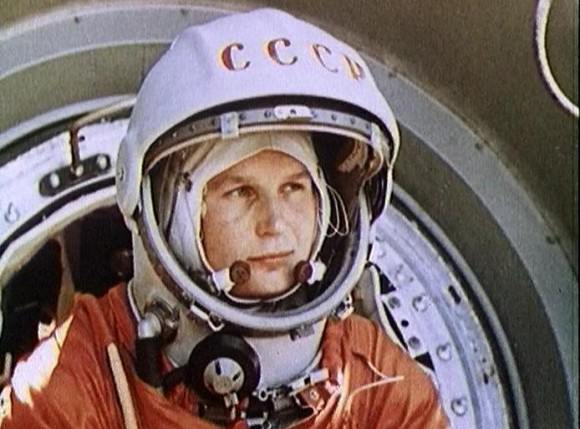
Her mission, Vostok 6, took place on June 16th, 1963. During her flight, Tereshkova orbited Earth forty-eight times, kept a flight log and took photographs that would prove useful to atmospheric studies. Aside from some nausea (which she later claimed was the result of spoiled food!) she maintained herself for the full three days and parachuted down during re-entry, landing a bit hard and bruising her face.
After returning home, Tereshkova went on to become a cosmonaut engineer and spent the rest of her life in key political positions. She married fellow cosmonaut Andrian Nikolayev and had a daughter. After her flight, the women’s corps was dissolved. Vostok 6 was to be the last of the Vostok flights, and it would be nineteen years before another woman would go into space (see Sally Ride, below).
John Glenn Jr.:
Colonel Glenn, USMC (retired) was a Marine Corps fighter pilot and a test pilot before becoming an astronaut. Due to his experience, he was chosen by NASA to be part of the Mercury Seven in 1959. On February 20, 1962, Glenn flew the Friendship 7 mission, and thus became the first American astronaut to orbit the Earth and the fifth person to go into space.
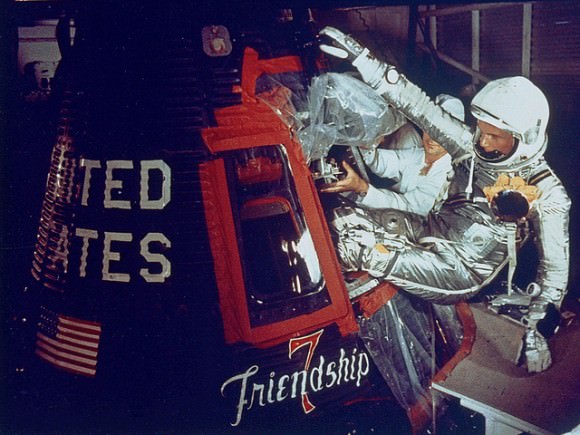
For his contributions to spaceflight, John Glenn earned the Space Congressional Medal of Honor. After an extensive career as an astronaut, Glenn retired from NASA on January 16th, 1964, to enter politics. He won his first bid to become a US Senator in 1974, representing Ohio for the Democratic Party, and was reelected numerous times before retiring in January of 1999.
With the death of Scott Carpenter on October 10, 2013, he became the last surviving member of the Mercury Seven. He was also the only astronaut to fly in both the Mercury and Space Shuttle programs – at age 77, he flew as a Payload Specialist on Discovery mission (STS-95). For his history of service, he was awarded the Presidential Medal of Freedom in 2012.
Neil Armstrong:
Neil Armstrong is arguably the most famous astronauts, and indeed one of the most famous people that has ever lived. As commander of the historic Apollo 11 mission, he will forever be remembered as the first man to ever walk on a body other than Earth. Born on August 5th, 1930, in Wapakoneta, Ohio, he graduated from Purdue University and served the National Advisory Committee for Aeronautics High-Speed Flight Station before becoming an astronaut.
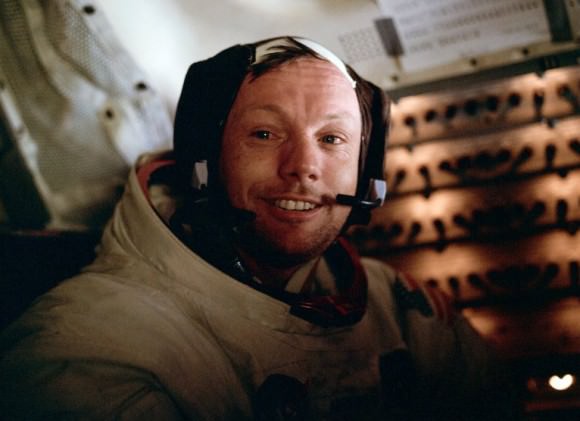
In accordance with the Holloway Plan, Neil studied at Purdue for two years and then committed to three years of military service as a naval aviator before completing his degree. During this time, he trained in the use of jet aircraft and became a test pilot at Andrews Air Force base, meeting such personalities as Chuck Yeager.
In 1962, when NASA was looking to create a second group of astronauts (after the Mercury 7), Armstrong joined and became part of the Gemini program. He flew two missions, as the command pilot and back-up command pilot for Gemini 8 and Gemini 11 (both in 1966), before being offered a spot with the Apollo program.
On July 16th, 1969, Armstrong went into space aboard the Apollo 11 spacecraft, alongside “Buzz” Aldrin and Michael Collins. On the 20th, after the lunar module set down on the surface, he became the first person to walk on the Moon. As he stepped onto the lunar surface, Armstrong uttered the famous words, “That’s one small step for a man, one giant leap for mankind.”
After retiring from NASA in 1971, Armstrong completed his master’s degree in aerospace engineering, became a professor at the University of Cincinnati, and a private businessman.
On Augusts 25th, 2012, he died at the age of 82 after suffering complications from coronary artery bypass surgery. On September 14th, his cremated remains were scattered in the Atlantic Ocean during a burial-at-sea ceremony aboard the USS Philippine Sea.
For his accomplishments, Armstrong was awarded the Presidential Medal of Freedom, the Congressional Space Medal of Honor, and the Congressional Gold Medal in 2009.
James Lovell Jr.:
Lovell was born on March 25th, 1928 in Cleveland, Ohio. Like Shepard, he graduated from the US Naval Academy and served as a pilot before becoming one of the Mercury Seven. Over the course of his career, he flew several missions into space and served in multiple roles. The first was as the pilot of the Apollo 8 command module, which was the first spacecraft to enter lunar orbit.
He also served as backup commander during the Gemini 12 mission, which included a rendezvous with another manned spacecraft. However, he is most famous for his role as commander the Apollo 13 mission, which suffered a critical failure en route to the Moon but was brought back safely due to the efforts of her crew and the ground control team.
Lovell is a recipient of the Congressional Space Medal of Honor and the Presidential Medal of Freedom. He is one of only 24 people to have flown to the Moon, the first of only three people to fly to the Moon twice, and the only one to have flown there twice without making a landing. Lovell was also the first person to fly in space four times.
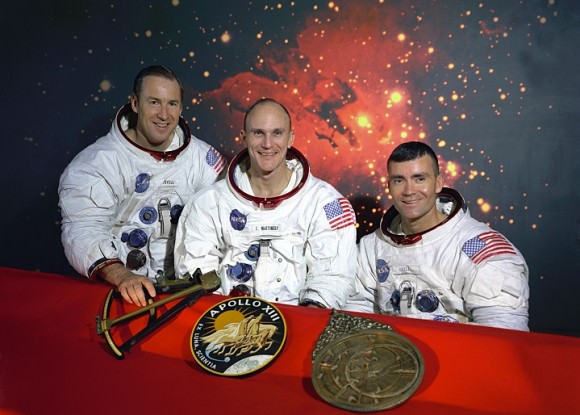
Dr. Sally Ride:
Sally Ride became renowned in the 1980s for being one of the first women to go into space. Though Russians had already sent up two female astronauts – Valentina Tereshkova (1963) and Svetlana Savitskaya (1982) – Ride was the first American female astronaut to make the journey. Born on May 26th, 1951, in La Jolla, California, Ride received her doctorate from Stanford University before joining NASA in 1978.
On June 18th, 1983, she became the first American female astronaut to go into space as part of the STS-7 mission that flew aboard the space shuttle Challenger. While in orbit, the five-person crew deployed two communications satellites and Ride became the first woman to use the robot arm (aka. Canadarm).
Her second space flight was in 1984, also on board the Challenger. In 1986, Ride was named to the Rogers Commission, which was charged with investigating the space shuttle Challenger disaster. In 2003, she would serve on the committee investigating the space shuttle Columbia disaster, and was the only person to serve on both.
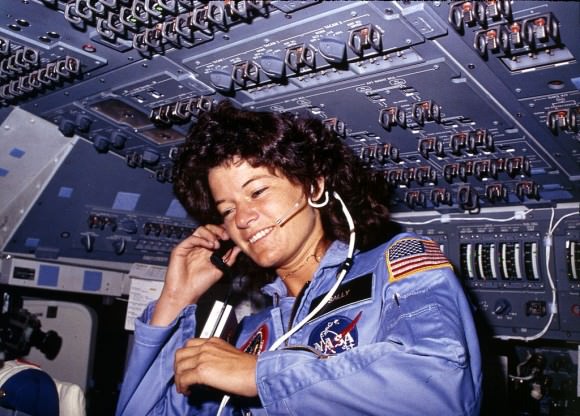
Ride retired from NASA in 1987 as a professor of physics and continued to teach until her death in 2012 from pancreatic cancer. For her service, she was given numerous awards, which included the National Space Society’s von Braun Award, two NASA Space Flight Medals, and was inducted into the National Women’s Hall of Fame and the Astronaut Hall of Fame.
Chris Hadfield:
Last, but certainly not least, there’s Chris Hadfield, the Canadian astronaut, pilot and engineer who became famous for his rendition of “Space Oddity” while serving as the commander of the International Space Station. Born on August 29th, 1959 in Sarnia, Ontario, Hadfield became interesting in flying at a young age and in becoming an astronaut when he watched the televised Apollo 11 landing at age nine.
After graduating from high school, Hadfield joined the Canadian Armed Forces and spent two years at Royal Roads Military College followed by two years at the Royal Military College, where he received a bachelor’s degree in mechanical engineering in 1982. He then became a fighter pilot with the Royal Canadian Air Force, flying missions for NORAD. He also flew as a test pilot out of Andrews Air Force Base as part of an officer exchange.
In 1992, Hadfield became part of the Canadian Space Agency and was assigned to NASA’s Johnson Space Center in Houston, as a technical and safety specialist for Shuttle Operations Development. He participated in two space missions – STS-74 and STS-100 in 1995 and 2001, respectively – as a Mission Specialist. These missions involved rendezvousing with Mir and the ISS.
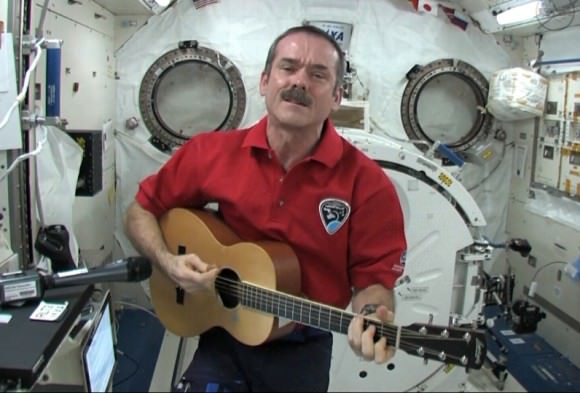
On December 19th 2012, Hadfield launched in the Soyuz TMA-07M flight for a long duration stay on board the ISS as part of Expedition 35. He became the first Canadian to command the ISS when the crew of Expedition 34 departed in March 2013, and received significant media exposure due to his extensive use of social media to promote space exploration.
Forbes described Hadfield as “perhaps the most social media savvy astronaut ever to leave Earth”. His promotional activities included a collaboration with Ed Robertson of The Barenaked Ladies and the Wexford Gleeks, singing “Is Somebody Singing?“ (I.S.S.) via Skype. The broadcast of this event was a major media sensation, as was his rendition of David Bowie’s “Space Oddity“, which he sung shortly before departing the station in May 2013.
For his service, Hadfield has received numerous honors, including the Order of Canada in 2014, the Vanier Award in 2001, NASA Exceptional Service Medal in 2002, the Queen’s Golden Jubilee Medal in 2002, and the Queen’s Diamond Jubilee Medal in 2012. He is also the only Canadian to have received both a military and civilian Meritorious Service Cross, the military medal in 2001 and the civilian one in 2013.
Universe Today has interesting articles on Neil Armstrong, “Buzz” Edwin Aldrin, and the enduring legacy of Apollo 11.
If you are looking for more information, you should check out famous aviators and astronauts and astronaut biographies.
Astronomy Cast has an episode on the US space shuttle.
Sources:
NASA: Alan Shepard Jr
NASA: Neil Armstrong
NASA: John Glenn
NASA: James Lovell Jr.
NASA: Sally Ride

